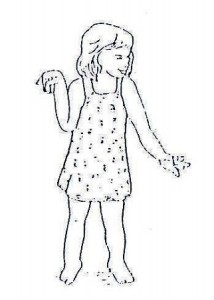In the Know: Cerebral palsy
Cerebral palsy refers to a group of neurological disorders that affect a person’s motor skills, or body movement, and muscle coordination, caused by an abnormality or disruption in brain development, usually before a child is born.
Signs and symptoms of the disorder appear during infancy or early childhood. Its early signs usually appear before a child reaches the age of 3.
Movement and coordination problems associated with cerebral palsy may include stiff or tight muscles, exaggerated reflexes, or spasticity; lack of muscle coordination, or ataxia; tremors or involuntary movements; difficulty in walking; excessive drooling; delays in reaching motor skills milestones, such as sitting or crawling; and delays in speech development.
Even though cerebral palsy affects muscle movement, it is not caused by problems in the muscles or nerves but rather, by abnormalities in parts of the brain that control muscle movement.
Factors that may lead to problems with brain development include maternal infections that affect the developing fetus, such as German measles, chicken pox, cytomegalovirus (a virus that causes flu-like symptoms), toxoplasmosis (a parasitic infection), syphilis and exposure to toxins, such as methyl mercury.
Article continues after this advertisementInfant illness, like bacterial meningitis, viral encephalitis and severe or untreated jaundice, can also increase the risk of cerebral palsy.
Article continues after this advertisementAccording to the National Institute of Neurological Disorders and Stroke, cerebral palsy cannot be cured but treatment can help people who have the disorder.
Treatment may include physical, occupational and speech therapy; drugs to control seizures, relax muscle spasms and alleviate pain; surgery to correct anatomical abnormalities or release tight muscles; braces and other orthotic devices; wheelchairs and rolling walkers; and communication aids, such as computers with attached voice synthesizers.
Some people diagnosed with cerebral palsy have become beauty queens, artists and professional athletes, such as actors RJ Mitte (Breaking Bad) and Geri Jewell (Facts of Life, Deadwood), professional wrestler Gregory Iron, beauty queen Abbey Curran and Australian Paralympic athlete Evan O’Hanlon.—Inquirer Research
Sources: mayoclinic.com, ninds.nih.gov, nlm.nih.gov, about.com, espn.go.com, ausport.gov.au, huffingtonpost.com, abbeyncurran.com
